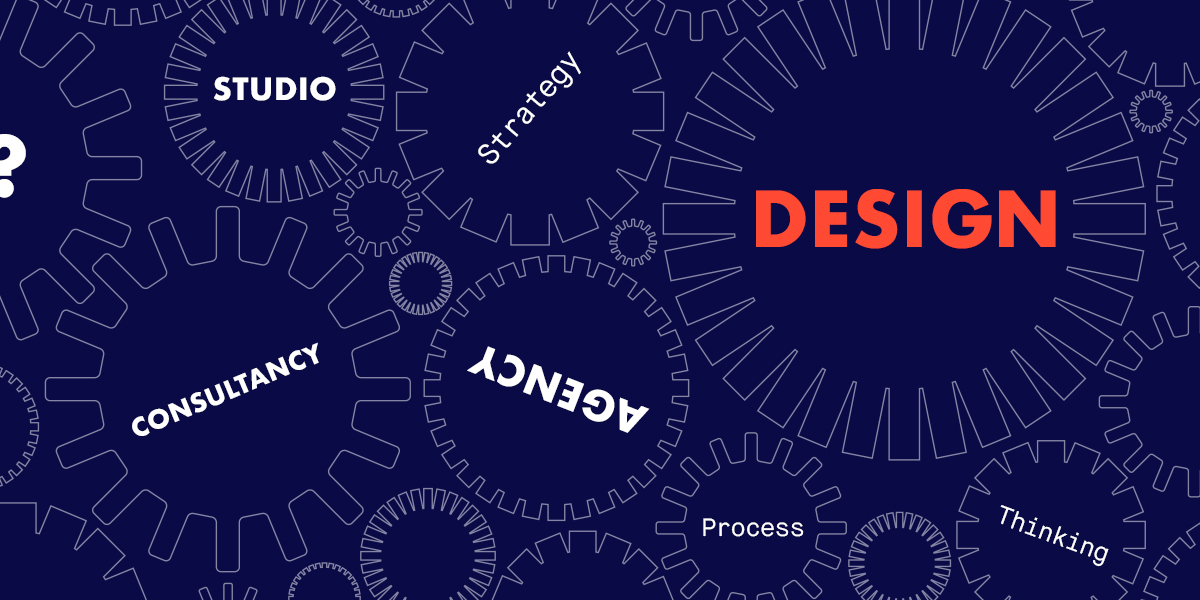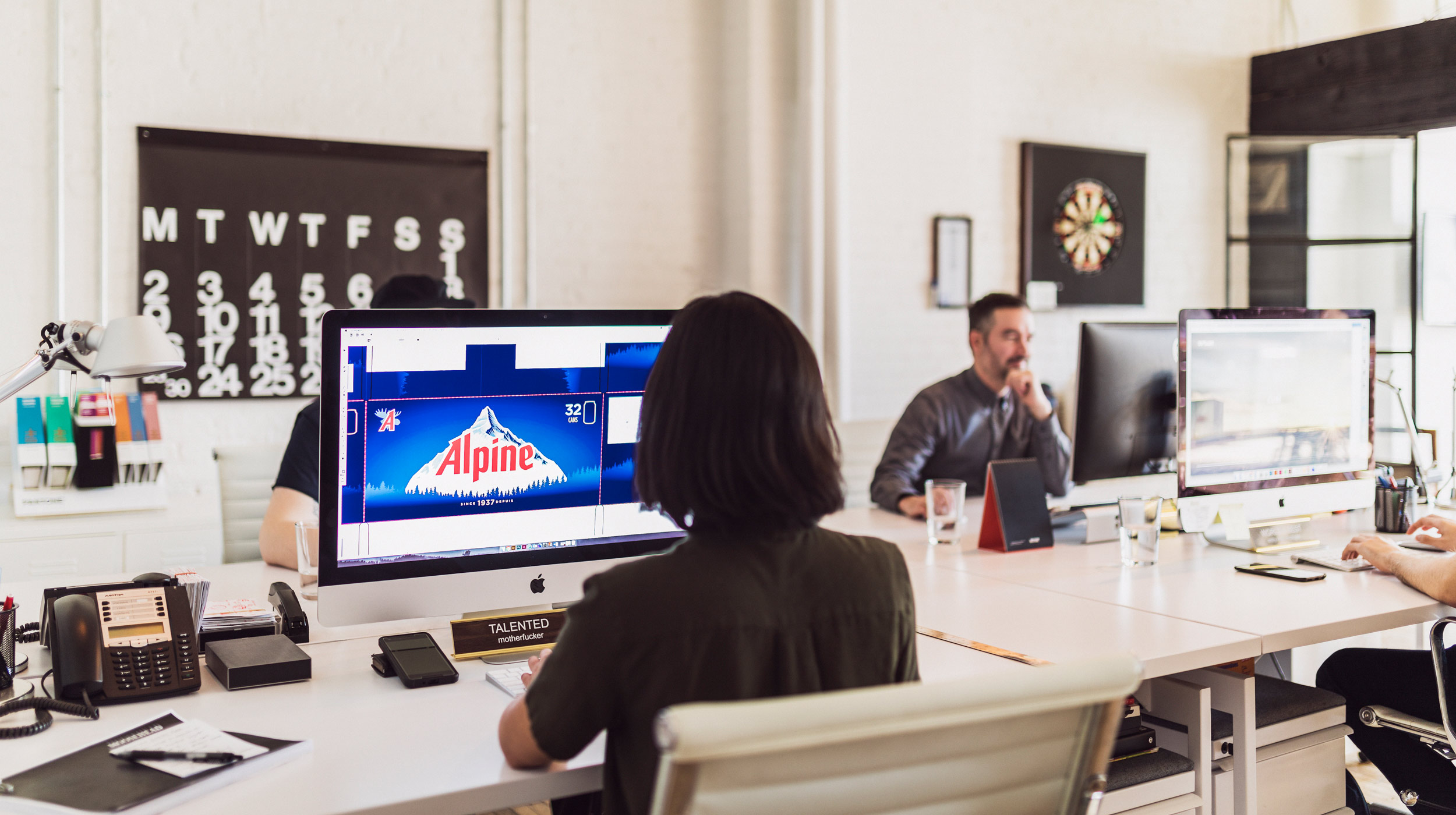
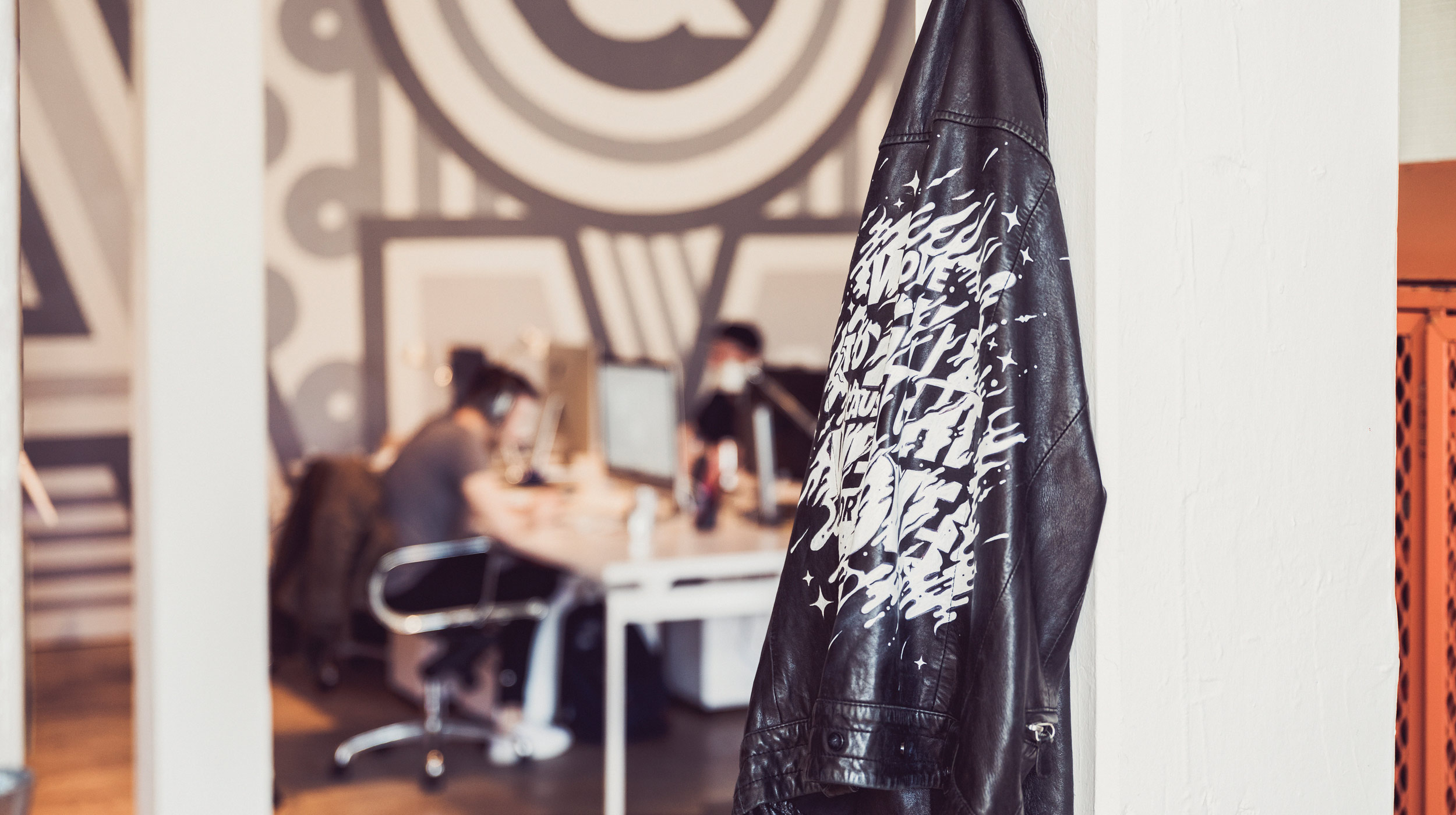
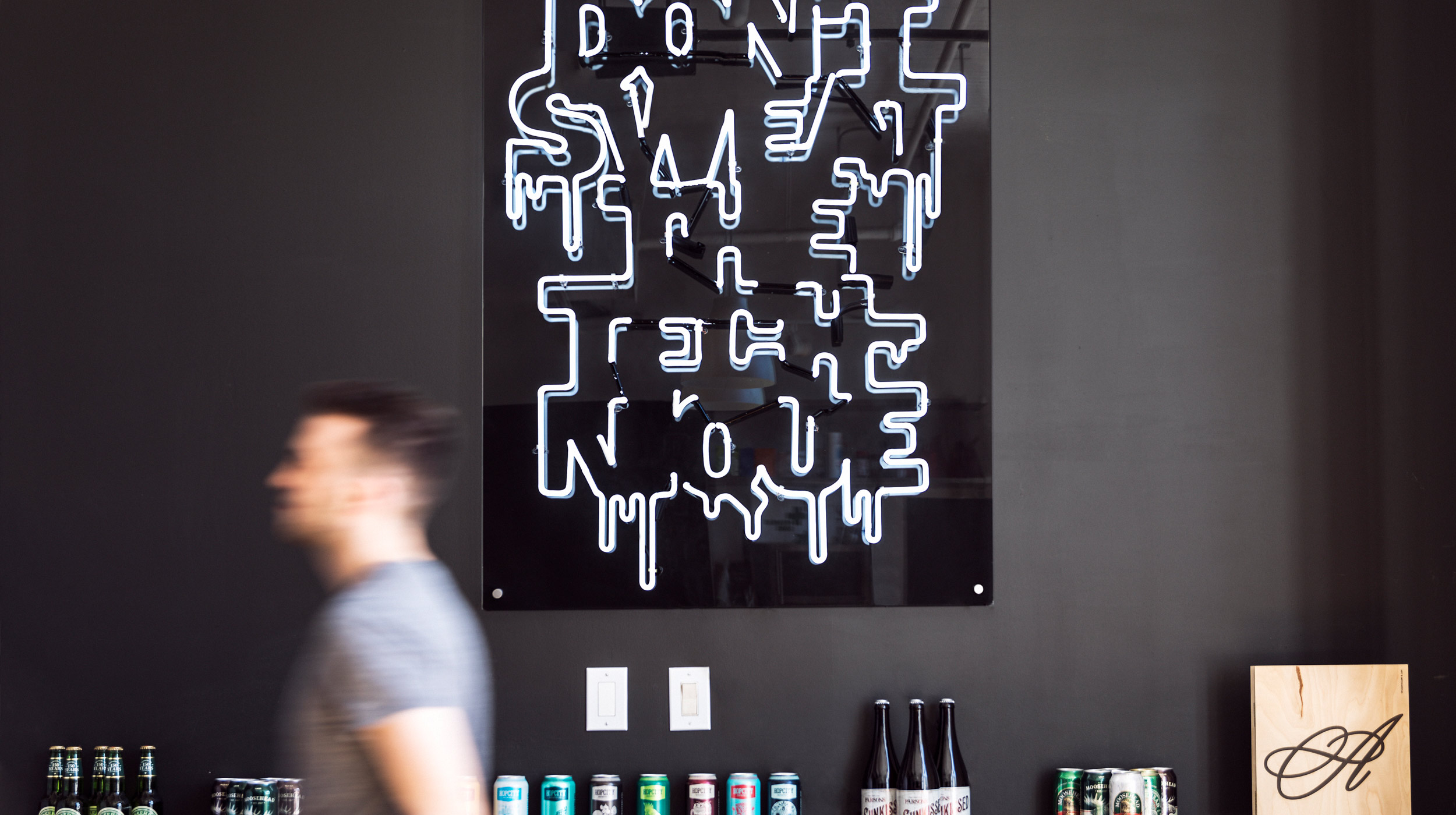
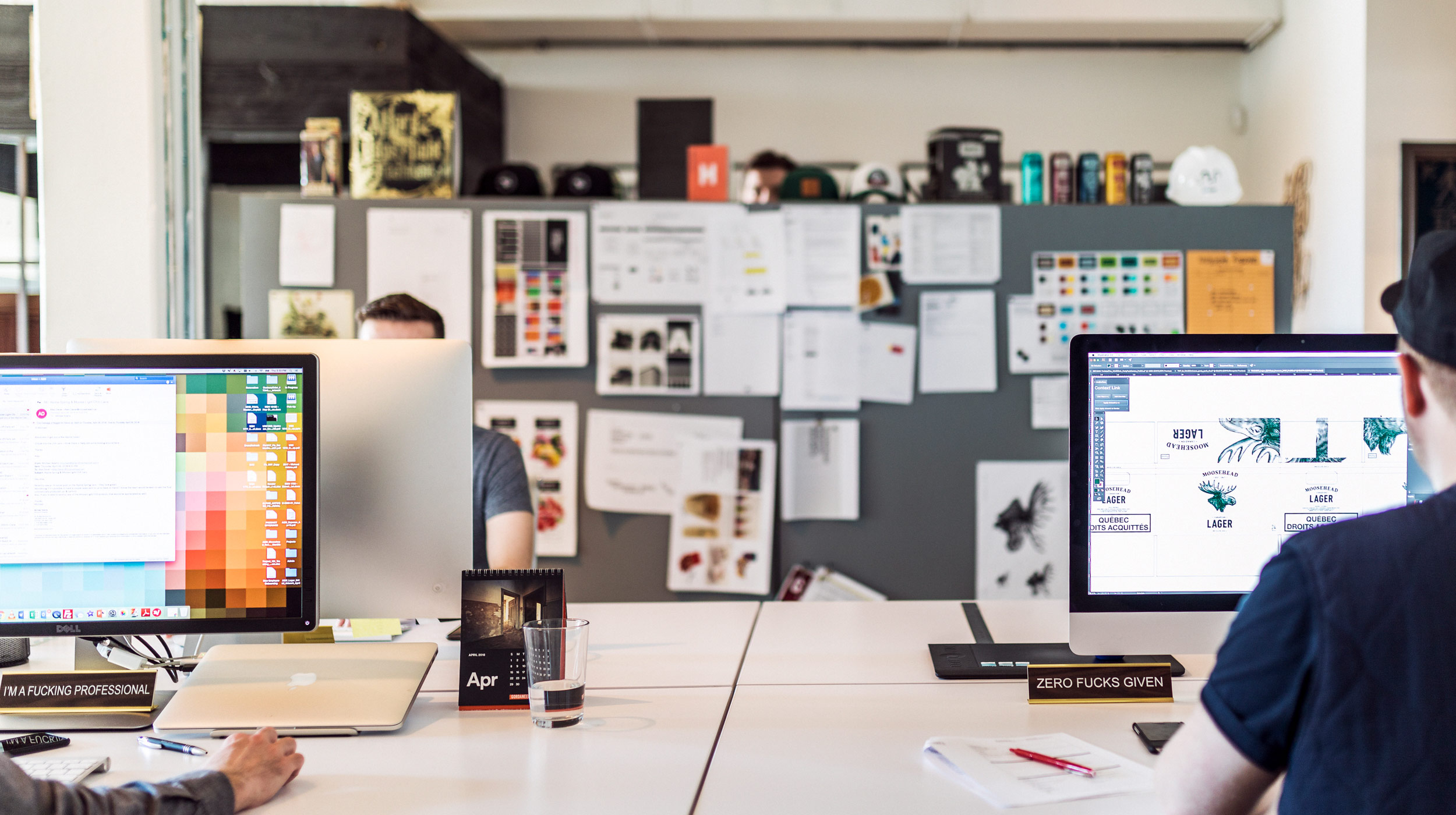
What is a Design Studio?
Design Studio? Design Agency? Design Consultancy? What makes a design-focused shop what it is, and why would you want to work with one?
In my opinion, the most noticeable and beneficial difference between design thinking and other creative approaches is strategy. Strategy is inherently part of the design process and their connection is undeniable. Design thinking is about finding better solutions, and those solutions aren’t just visual. We see the design approach as being fundamental to building and sustaining brands specifically because of the role it plays in defining and amplifying the purpose of the brand, its value to the consumer, the role it plays in their lives and ultimately the way a consumer experiences it.
Now, design is not the only function that is strategic, but one thing I can state with my whole heart is that no one is better at working strategically, or within a strategic function than designers. And . . . NO ONE is better at ensuring the strategy is reflected in the creative output than designers. There. I said it.
That may be because of how their own design process works or how collaboration with a strategic department helps them to better ideate. When we’re working on a new brand, for example, we often explain the benefits of creating a “sandbox” to our clients. This sandbox is the result of strategy defining creative territory that we think is relevant and ownable. It’s also a tool we use to limit the amount of creative territory available to us by understanding who the brand really is and what our consumers really want or expect from us. At times, this is already well defined so it’s about immersion more than creation or definition. But more often than not, it is poorly defined, not defined at all or needs to be updated. This is usually our first opportunity to engage in a strategic design process.
Think about the sandbox like concentric circles, with the largest representing infinite creative space and the smallest being the summation of our brand strategically, something we call the platform or the strategically validated space that our brand can live. Everything in-between is the process of validating the platform and everything after is what consumers will ultimately experience. Once the sandbox is established, everything is easier to evaluate, and vague concepts now have clear articulations that everyone can understand and support.
Not all strategic processes are that big, but strategic considerations should be present when evaluating any brief. When it comes to building a new brand or a rebrand, the role of strategy is more obvious. It’s less obvious when you start developing print or digital communications, packaging, environments or one of the many other outputs a studio may be working on, but it’s there. It may come to life in smaller and less obvious ways in a process like brand stewardship for example. Understanding a brand’s long term vision, and strategic purpose is necessary to ensure consistency in tone and composition. Brands that people admire do a great job of expressing themselves succinctly through every touchpoint and don’t specifically rely on advertising as the key channel to connect to consumers, rather smartly utilize it to amplify a brand that people already love because they got everything else right.
The key takeaway here is that design is important. The value it can add is much bigger than you realize, and groups that focus on design are unique to those that have a design function as part of a bigger offering. So now you know.
